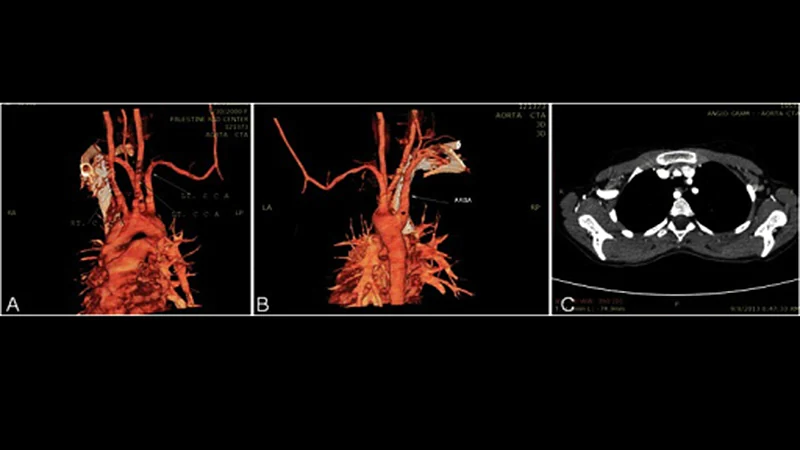The study covered in this summary was published on researchsquare.com as a preprint and has not yet been peer reviewed.
Key Takeaways
-
The study demonstrates that the prevalence of right subclavian plaques is an independent risk factor for future cardiovascular events. Higher levels of globulin and lower levels of albumin were also predictors.
-
In hypertensive patients, evaluation of subclavian artery atherosclerosis, especially when combined with assessment of carotid artery atherosclerotic plaques, may have the strongest predictive value.
Why This Matters
-
The findings suggest evaluation of subclavian artery atherosclerosis may provide additional information to help predict future cardiovascular events.
Study Design
-
Using the standardized medical records collecting system for 473 participants who were admitted to the hospital due to essential hypertension who experienced cardiovascular events between July 1, 2017, and November 30, 2019, the researchers investigated the association between right subclavian plaques and future cardiovascular events.
-
The authors defined cardiovascular events as at least one of acute myocardial infarction (AMI), unstable angina pectoris (UA), hospitalization for percutaneous coronary intervention (PCI), coronary artery bypass grafting (CABG), stroke, heart failure, and death.
-
Participants were asked to regularly follow up with the outpatient service, and those who did not were called by telephone every 3 months.
Key Results
-
The prevalence of right subclavian plaque (odds ratio [OR] = 2.428; 95% CI, 1.098-5.370; P = .028) and combined carotid and subclavian plaques (OR = 3.539; 95% CI, 1.547-8.096; P = .003) were both significantly associated with endpoint events.
-
Higher levels of globulin and lower levels of albumin were also significantly associated with the incidence of future cardiovascular events.
Limitations
-
Coronary computed tomography angiography and coronary angiography were not routinely performed, as participants were only diagnosed with essential hypertension. Therefore, they could not assess coronary artery calcium, another frequently used marker.
-
This cohort involved hypertensive participants that would be different from the general population because hypertension itself could affect outcomes to some extent, they note. Therefore, a larger sample size and longer follow-up are needed.
-
Data on status of antihypertensive control after discharge were not available.
-
Because of short follow-up period, markers such as total triiodothyronine and body mass index could present significant correlations with endpoint events at five- or ten-year follow-ups.
-
An additional ultrasonic scan on carotid and subclavian arteries was not yet performed and changes in carotid intima-media thickness and plaques may play a role in endpoint events.
Study Disclosures
-
The authors received support from the China Young and Middle-Aged Clinical Research Fund.
This is a summary of a preprint research study, “ Association between Subclavian Artery Plaques and Future Cardiovascular Events in a Hypertensive Cohort ,” by Liying Mu from the Beijing Tian Tan Hospital and colleagues on Research Square and provided to you by Medscape. This study has not yet been peer reviewed. The full text of the study can be found on MedRxiv.org.
Source: Read Full Article
